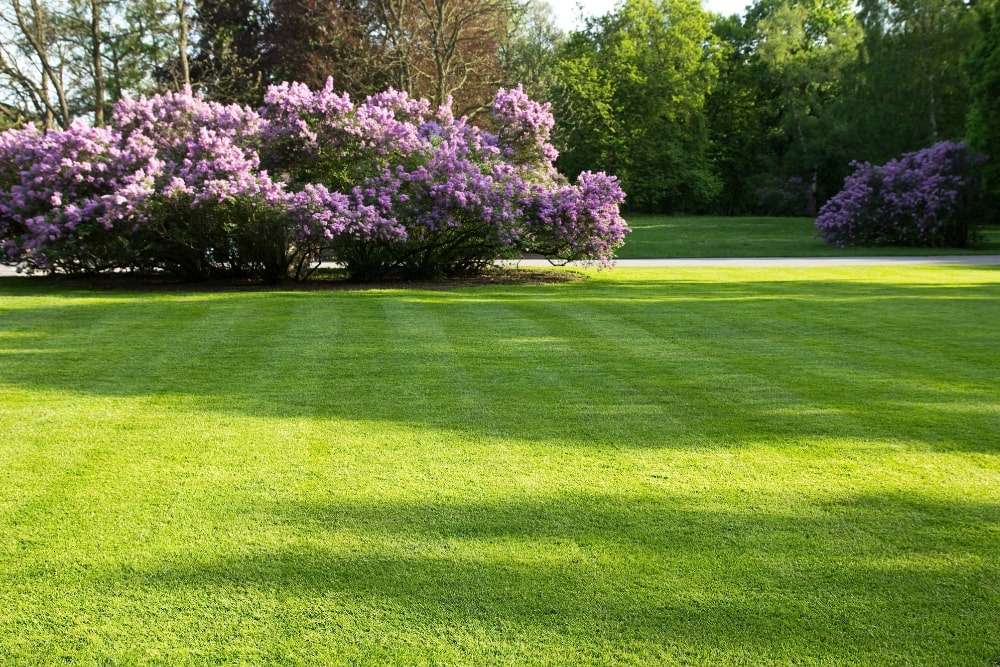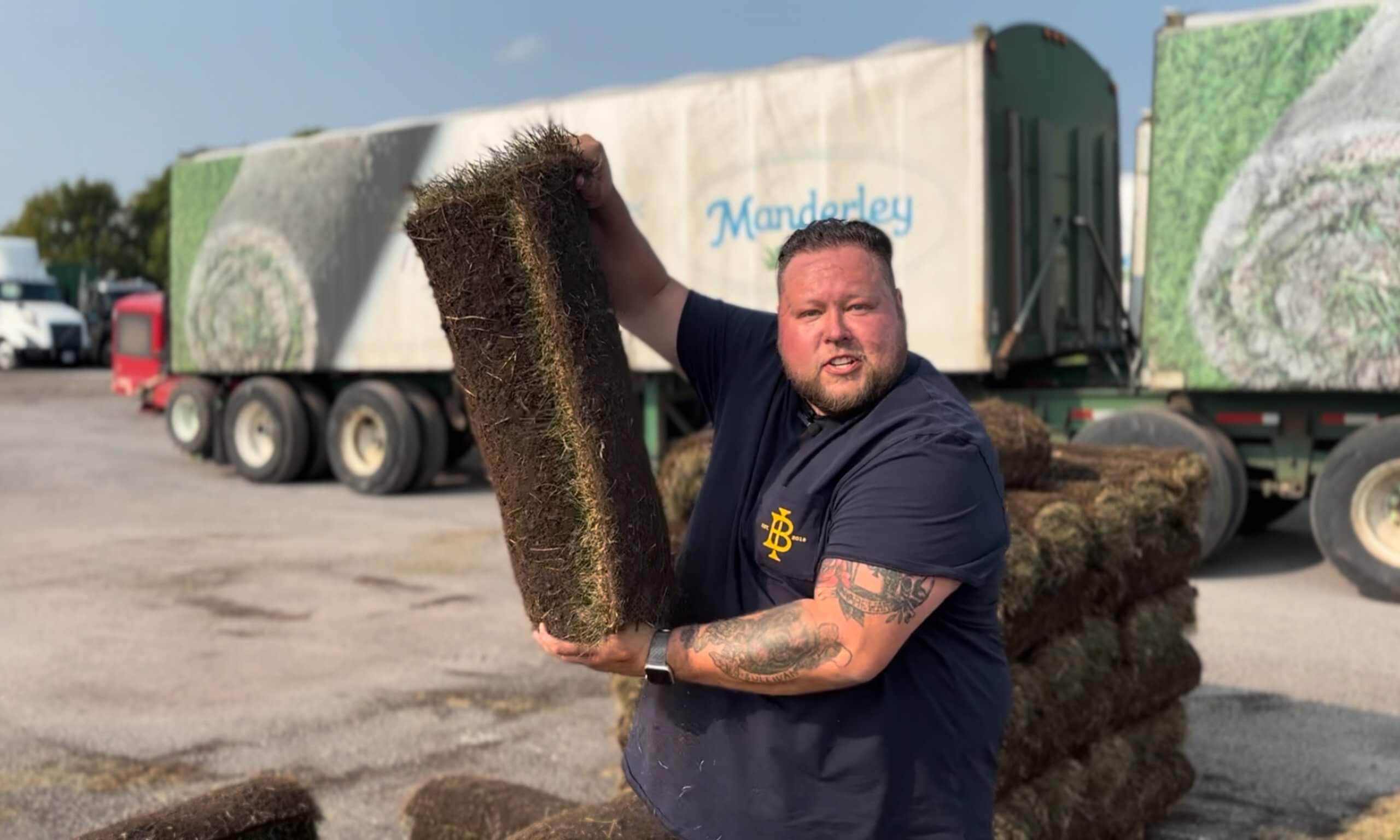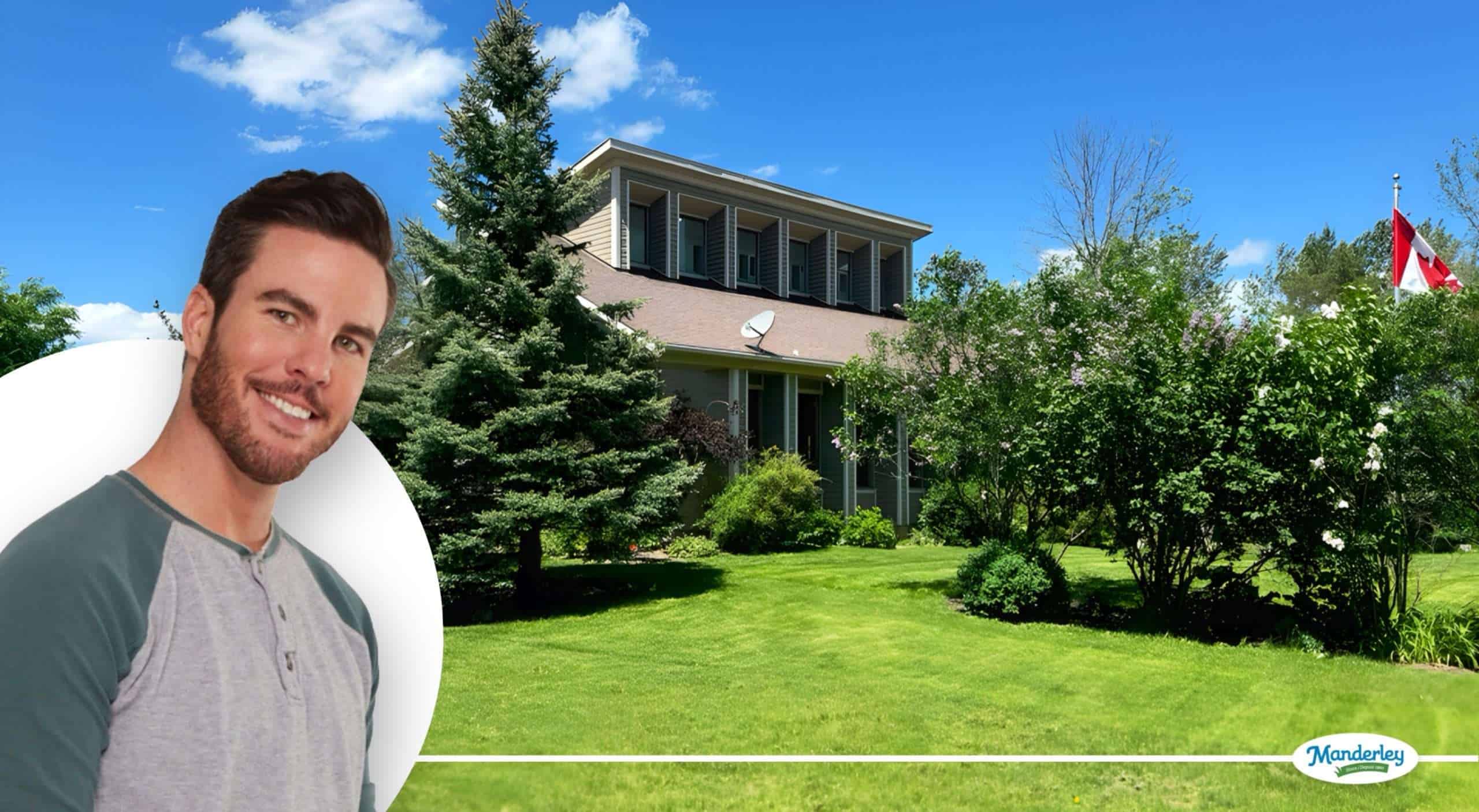Creating a beautiful outdoor space shouldn’t require sacrificing your weekends for lawn care. With a strategic, low-effort maintenance routine, you can achieve a lush, resilient lawn that stands up to weather, wear, and weeds – without constant attention.
By focusing on three foundational tasks – overseeding, mowing, and fertilizing – you’ll strengthen your lawn’s health, improve appearance, and reduce long-term upkeep. Here’s how to set your lawn up for success this season.

Overseeding: Strength in Numbers
Seasonal overseeding is one of the most effective ways to improve lawn density and minimize weed pressure. The ideal times to overseed are spring and fall, when cooler temperatures and more consistent moisture provide optimal growing conditions.
Overseeding in the spring helps repair winter damage, fills in bare patches, and thicken a lawn. The denser the less, the less likely weeds will be able to establish. For homeowners looking to spend more time enjoying their yard and less time pulling weeds, overseeding is essential.
Mowing: Cut Smarter, Grow Stronger
Proper mowing isn’t just about keeping your lawn neat – it’s about setting the foundation for long-term health. To discourage weeds and disease, grass should be kept at the right height and mowed consistently.
- Kentucky Bluegrass performs best when maintained between 5″–3.5″
- Fine Fescue thrives at 3″–4″
Follow the “one-third rule”: never remove more than one-third of the blade’s height in a single cut. Overcutting may stress the plant, leading to plant damage and other unwanted side effects. Avoid letting grass grow so tall that it begins to fall over, as this leads to thinning, stress, and increased vulnerability to pests and disease.
Pro Tip: Leave grass clippings on the lawn. As they break down, they return valuable nutrients to the soil, improving water and nutrient retention and reducing the need for additional fertilization. It’s a simple, effective way to let your lawn work for you.
Fertilizing: Replenish Lost Nutrients
Even the healthiest lawns require a seasonal nutrient boost. Over time, essential elements in the soil become depleted, especially in high-traffic or frequently mowed areas. Fertilizing is a quick but essential task that strengthens roots, improves color, and supports consistent growth through the season.
Select a fertilizer that best suits your lawns needs, depending on the stage of its lifecycle and time of the growing season. Always be sure to follow the application guidelines listed on the product carefully. Inaccurate applications can cause lawns to burn as well as leading to nutrient run off, which can be harmful to other plants and animals. For best results, Fertilizer any new sod or seed, and continue to follow a regular season maintenance program to address seasonal nutrient deficiencies before they develop into bigger problems.
A Healthier Lawn, Without the High Effort
These high-impact practices – overseeding, mowing properly, and seasonal fertilization – require minimal time but deliver significant results. By investing in these essentials, you’ll reduce the need for future interventions and enjoy a thicker, greener, more self-sustaining lawn all season long.
For more guidance on seasonal care, explore our resources at manderley.com and follow us on social media for expert tips designed to help you save time, save water, and get the most from your outdoor space.


